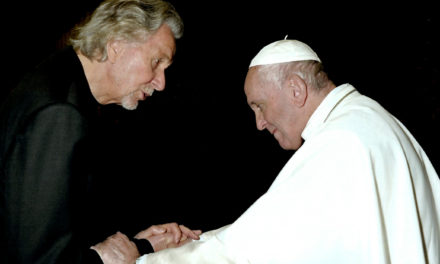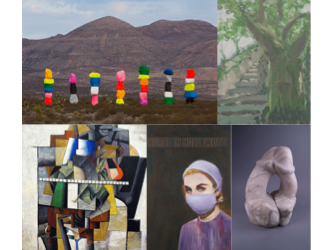Heroes who die young
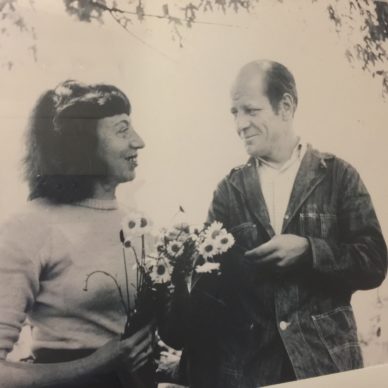
Krasner& Pollock
In art history, posterity favours misfortune and heroes who die young. We love Van Gogh, who died at 37 without having sold a single artwork. We love Nicolas de Staël, who killed himself due to a failed romance at the age of 41. Similarly, we lament the fact that the great Jackson Pollock (1912-1956), who would literally dance to splatter his canvas with splashes of paint in his famous “drip paintings”, met his end in a car accident with his mistress.
Second rate drawer!

Faced with the steamroller of this legend of cursed geniuses, there isn’t must space for their partners. This is how Jackson Pollock’s wife, Lee Krasner (1908-1984), who was part of the abstract expressionist movement along with her husband, was consigned to the second-rate drawer of contemporary art, at least in Europe.
(Listen to what she says about her relationship with Pollock’s drippings here)
Travelling exhibition
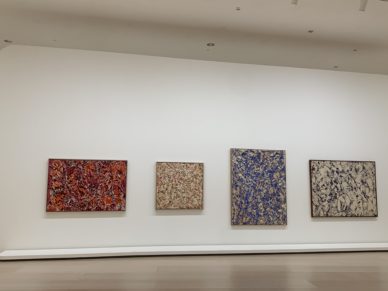
So it should be celebrated that a travelling exhibition is re-establishing the importance of this painter. She is being presented with a display of 62 artworks at the Guggenheim Bilbao until 10 January. The overall impact is strong because the paintings exhibited, which illustrate her various periods, are of a very high quality.
Springs

Pollock studio
Her early works were inspired by cubism and a certain expressionism, but the real revelation came later. Krasner didn’t have just one style. She was always seeking and evolving.She met Pollock in 1942. They married and went to live in Springs, a village in the Hamptons near New York, in a house that can still be visited today, where she created what are known as her “little images”.

The compositions resemble invented pieces of writing, a collection of individualised motifs.
Violent and cadenced
But her first exceptional works emerged in the mid-1950s. Disheartened, she began to tear up her abstract drawings. When she returned to the studio a few weeks later, she rearranged these torn-up scraps of paper. At once violent and cadenced, these paintings are organised using rhythmic bursts of color, and are very accomplished.
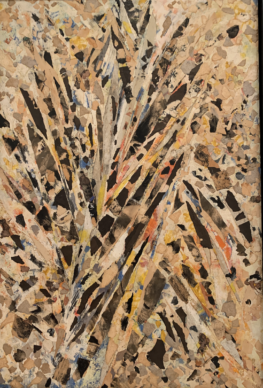

Lucia Agirre
The curator of the exhibition, Lucia Agirre, says: “she cannibalizes herself”.
The prophecies

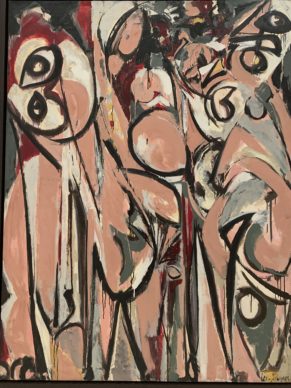
In 1956 Lee travelled to Paris and Pollock died while she was there. She had just started a new cycle of major paintings, the “prophecies”. These were images of densely tangled bodies in shades of pink, outlined in black, reminiscent of Picasso and the abstract expressionism of Willem de Kooning. With her partner now dead, she took over the vast studio and applied herself to large-scale works. Out of this emerged a very gestural and dense style of painting resembling landscapes with no beginning or end.
Magically beautiful

Matisse was one of her key references, and she said: “with color one obtains an energy that seems to stem from witchcraft”. You could say that Krasner’s dynamic pictures are magically beautiful. With the exception of a few weaker paintings towards the end, her abstractions she dared to give endlessly different forms to are – each in their own way – heirs to the very best of modern art. Impressive.
(Lee Krasner was born on 27 October 1908)
Lee Krasner. Living Color. Until 10 January. www.guggenheim-bilbao.eus.
Support independent news on art.
Your contribution : Make a monthly commitment to support JB Reports or a one off contribution as and when you feel like it. Choose the option that suits you best.
Need to cancel a recurring donation? Please go here.
The donation is considered to be a subscription for a fee set by the donor and for a duration also set by the donor.


